Keeping spices and herbs stocked in your kitchen yields easier and tastier cooking! Check out this printable basic spices list and tips for keeping your spices and herbs fresh and optimal.
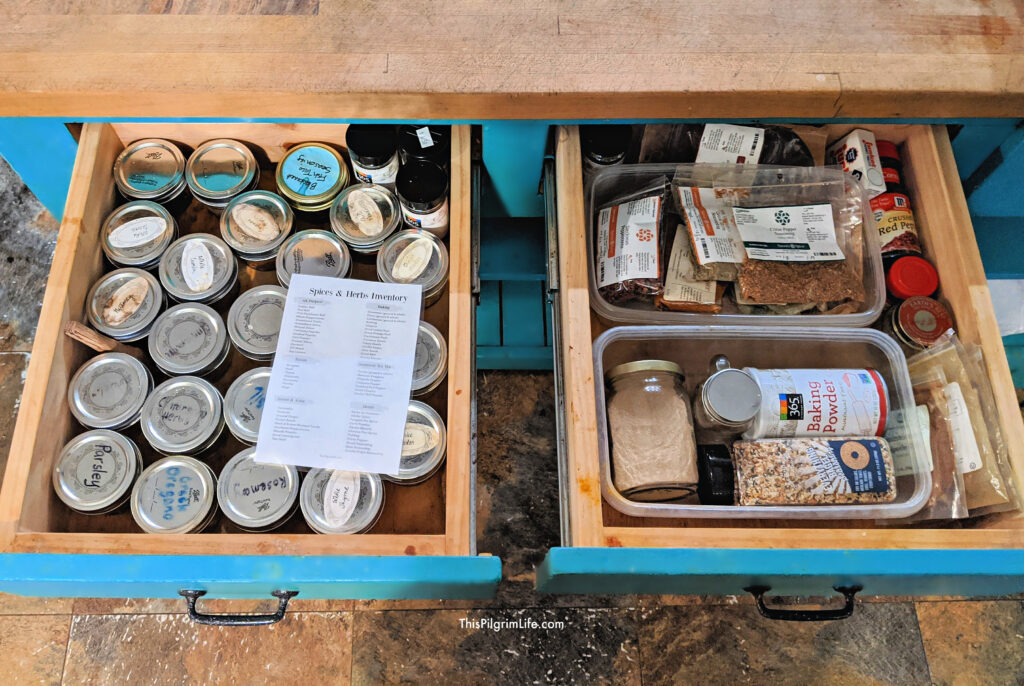
The links below may be affiliate links, meaning I earn a small compensation at no extra cost to you. See my full disclosure policy here.
Using fresh, good-quality spices and herbs can be one of the quickest and easiest ways to improve the overall taste and enjoyment of the food you cook. Simply swap stale, expired, or bland spices for fresh ones and notice the difference!
I’ve shared often on Instagram how I prefer to use inventories, seasonal menus, and curated shopping lists to streamline repeated tasks like grocery shopping and meal planning. I’ve been using these lists for years and they haven’t stopped being really helpful!
My favorite lists are ones that I can use again and again. A few years ago, I created a Spice Inventory Checklist to use to help me make sure I am not accidentally completely out of cinnamon or garlic (which would both be awful).
You can grab your own copy of my Spice Inventory Checklist in my Etsy shop, as well as some of my other customizable resources to use in the kitchen and for planning.
Keep reading for…
- a list of basic spices to keep on hand,
- steps to give your spices a reset, and
- tips on keeping your spices and herbs in optimal condition
- & where to get fresh spices and recommended spice tools
Basic Spices List
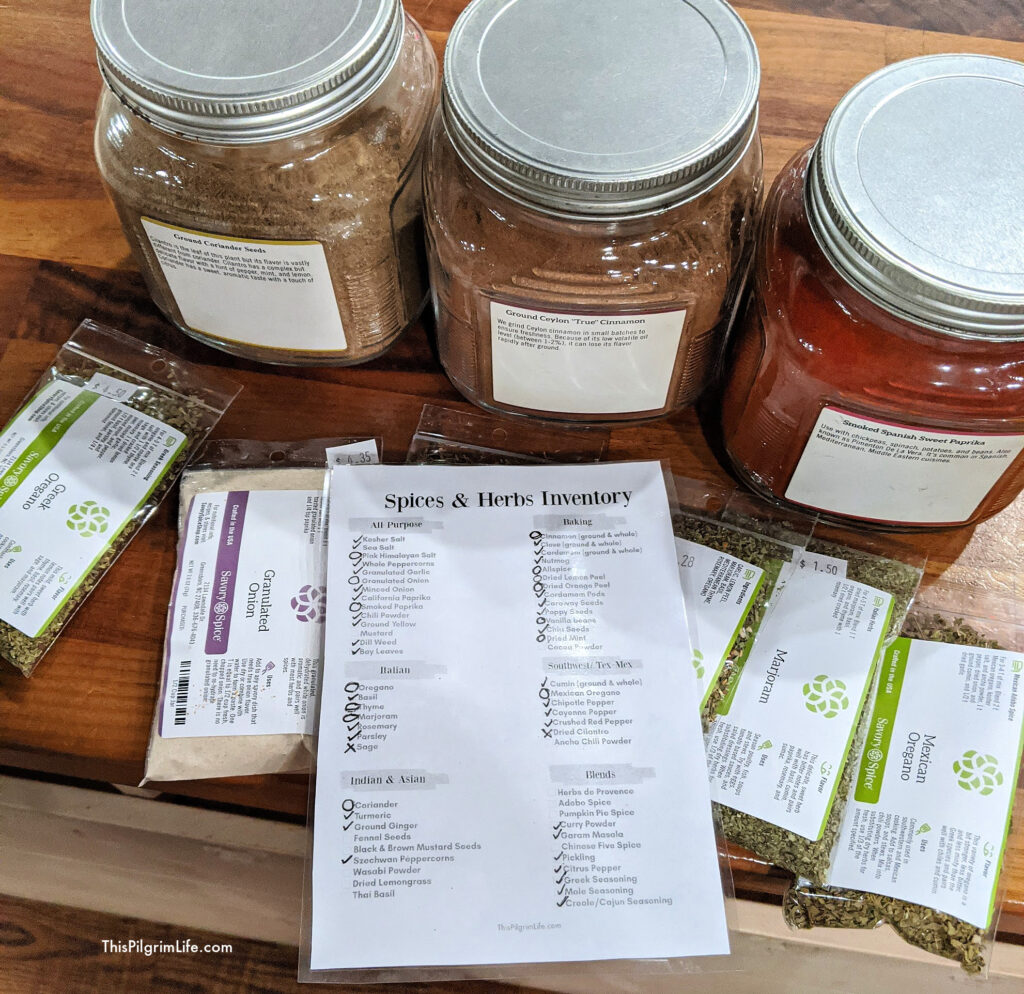
This weekend I emptied my spice drawers completely to clean, sort, and take inventory. My littles helped me to wipe down each jar and the plastic storage boxes that had accumulated a lot of spice debris. I also vacuumed and wiped out the drawers themselves for the same reason.
In addition to the cleaning, I checked each bag or jar for an expiration date. It’s kind of crazy what can get overlooked over time. I had spices that expired two to three years ago, and a package of yeast that expired six years ago! Long-expired spices and herbs do not deserve the space (especially since their dates clearly indicate that they are not being used!).
Another task I had to do a few times was marrying packages of spices. If they had a similar expiration date, and I had multiple bags, I tried to combine as much as I could. For some reason, I had three partially-empty bags of turmeric.
Once all this housekeeping was finished, I returned the jars to the drawer, briefly contemplated putting them in alphabetical order, then quickly dismissed that idea as being futile.
I’ve been using my inventory checklist of spices and herbs for a few years now, and just like my Kitchen Essentials Checklist, it’s really helpful in being thorough when it’s time to make a trip to the spice shop or grocery store.
The Spice Inventory Checklist includes all the spices most regularly used and generally kept on hand, as well as commonly used blends and spices and herbs more specific to other types of cuisine. I also cross-referenced several other sources to make sure I wasn’t leaving anything out.
You can grab your own Spice Inventory Checklist in my Etsy shop and keep a copy posted in your kitchen, in a planner, or laminate it and keep it in your spice drawer!
Tips for Keeping Spices & Herbs Fresh
- Start with a clean out.
- Empty your cabinet/drawer.
- Wipe down the jars/containers.
- Vacuum out the cabinet/drawer.
- Check the expiration dates on jars and bags. Toss out* spices that are expired 6+ months. (You can “test” the spices by opening them and smelling them. They should smell fresh and strong, not stale or musky. Old spices will not flavor your food as well as fresh spices).
- Condense/refill spices. Consider using the same style jars for all your spices so they fit best in a drawer or on the shelf.
- Organize your spices. Return to cabinet/drawer tidier and more organized than before. Consider using a shelf or lazy susan in a cabinet, or storage bins in a drawer to make your containers more visible/accessible. Store spices in a cool, dark location.
- Use the Spice & Herb Inventory sheet to make a note of what you have on hand, and what you need to replenish.
- Buy fresh spices for best tasting food! Many spices on the shelf at the store have sat on the shelf for long periods of time, and possibly in a warehouse before that. For the best, freshest spices, check out the options below that source directly from farms, and/or prioritize freshness.
*What range of expiration you decide is appropriate is ultimately up to you, as well as what you decide to do with expired spices.
Where to Get Fresh Spices
- Savory Spice Shop (stores in various states across the country)
- Frontier Coop (can also find in many grocery stores too)
- Penzey’s
- Thrive Market (membership grocery service)
- The Spice House
- Spicewalla
- Local ethnic markets
Helpful Tools
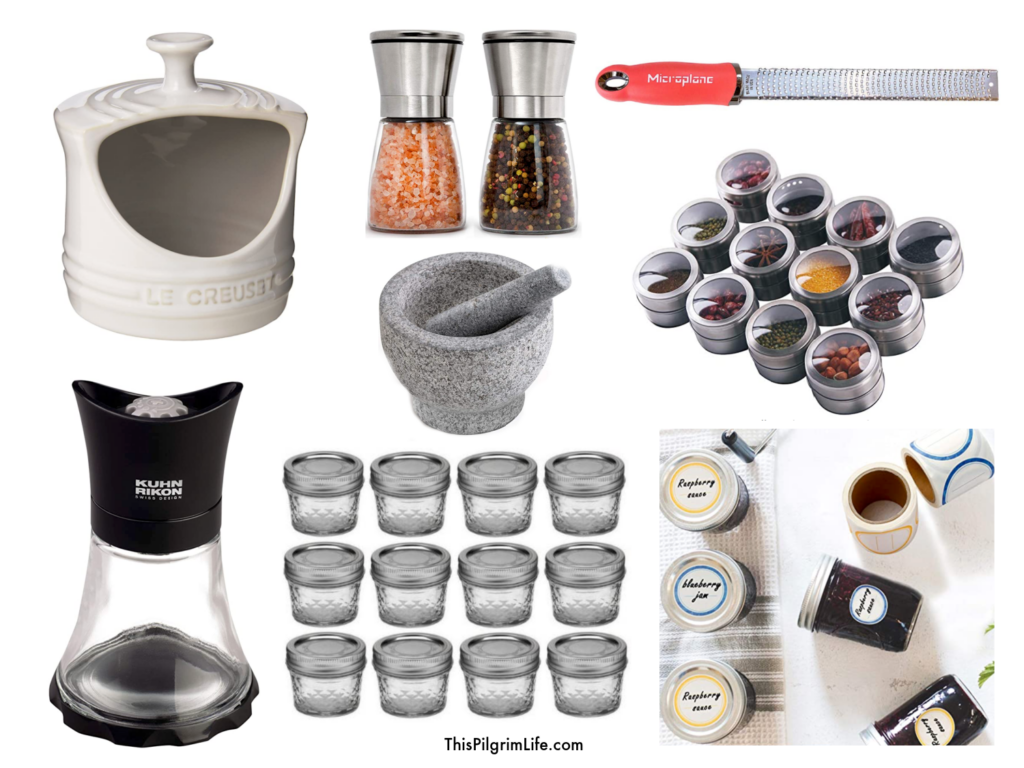
- Salt & Pepper Grinder Set (easily grind whole peppercorn and salt for maximum freshness)
- Salt Crock (this is what we have used for years to hold our kosher salt. it’s so convenient for seasoning food while I cook and at the table)
- Spice Grinder (we have this spice grinder. I love how easy it is to use. I keep whole cumin in mine, mostly, because fresh ground cumin is amazing).
- Mortar & Pestle (a convenient– and fun– tool for grinding fresh herbs and making your own blends and pastes)
- Microplane (this handy tool is great for grating hard spices like nutmeg, as well as easy fruit zest, and perfectly grated parmesan cheese)
- Small Mason Jars (these are what I use to store my spices)
- Magnetic Spice Jars (these have openings for shaking and pouring too!)
- Labels (I need to get new labels to give my jars a fresh and clean look. Not to mention make them easier to read!)

Sharing is caring! Don’t forget to pin and share. Thank you!
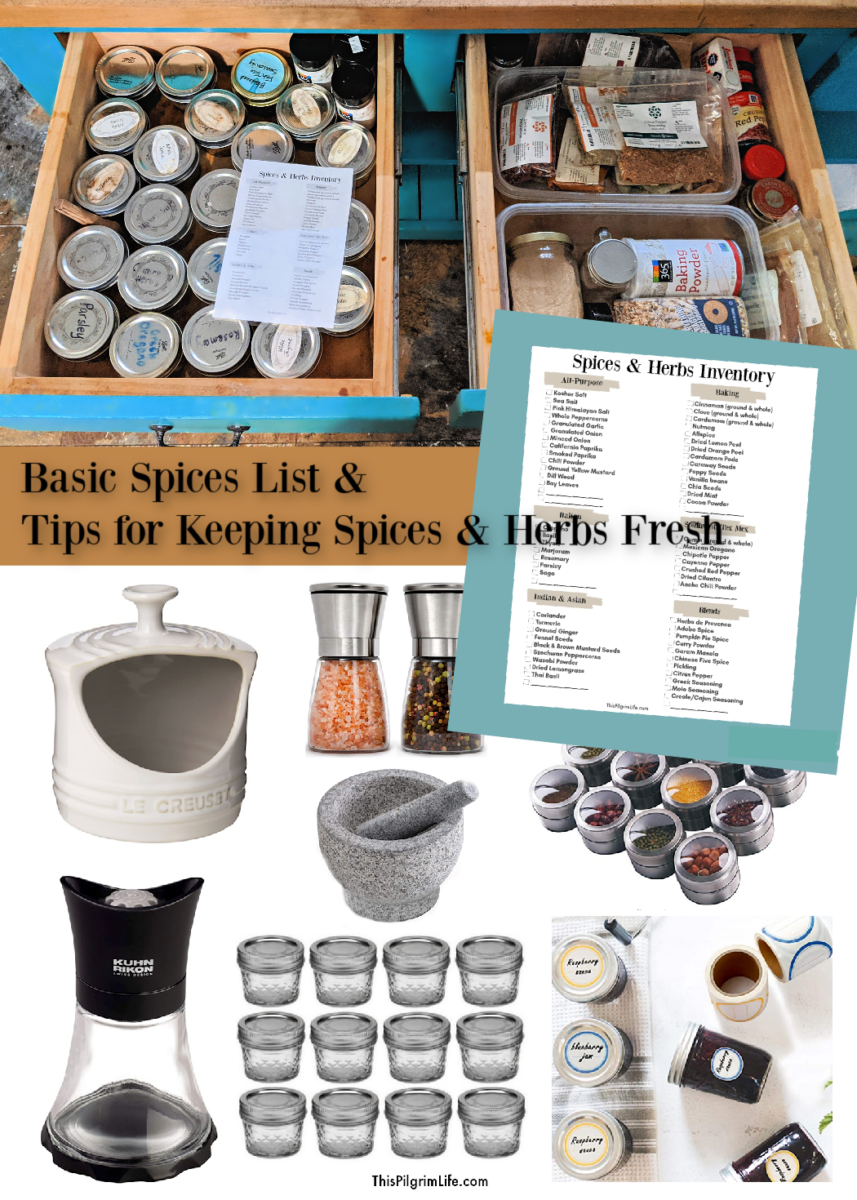
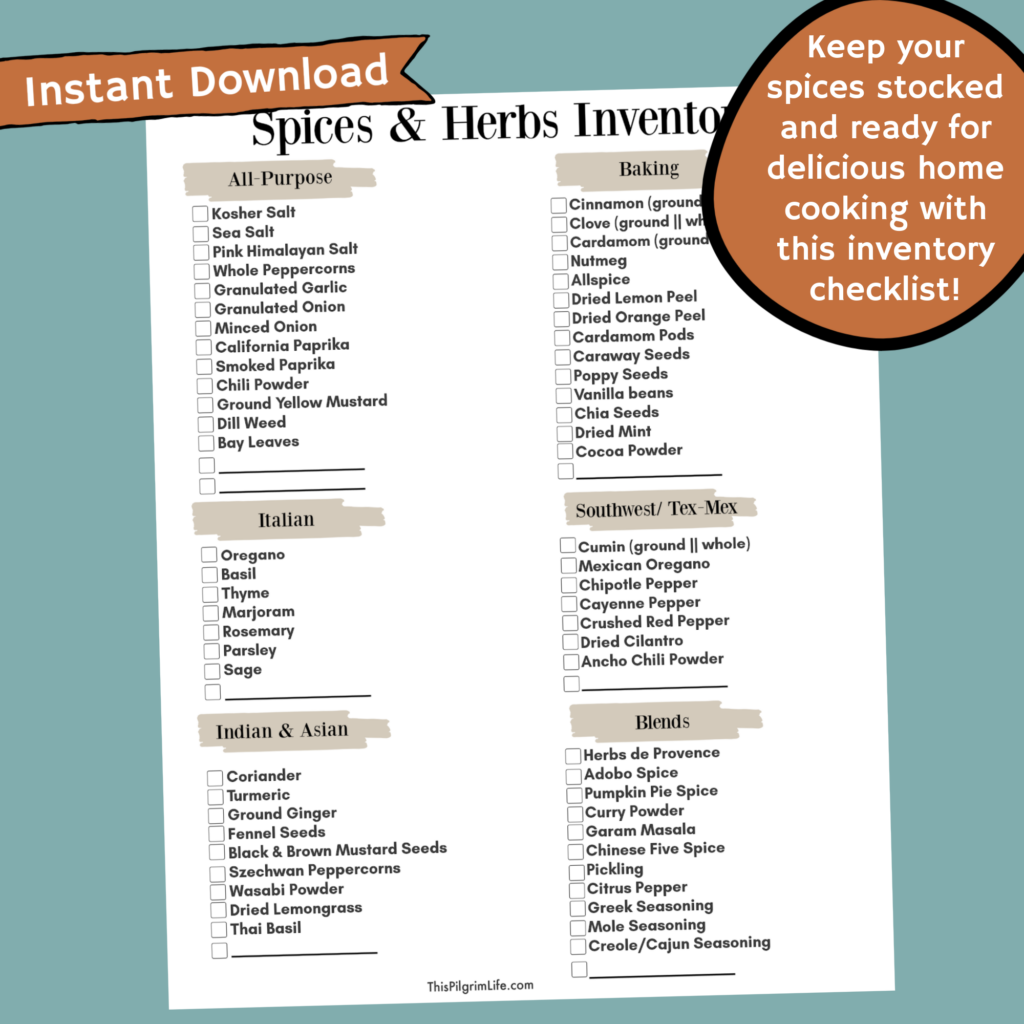
Leave a Reply